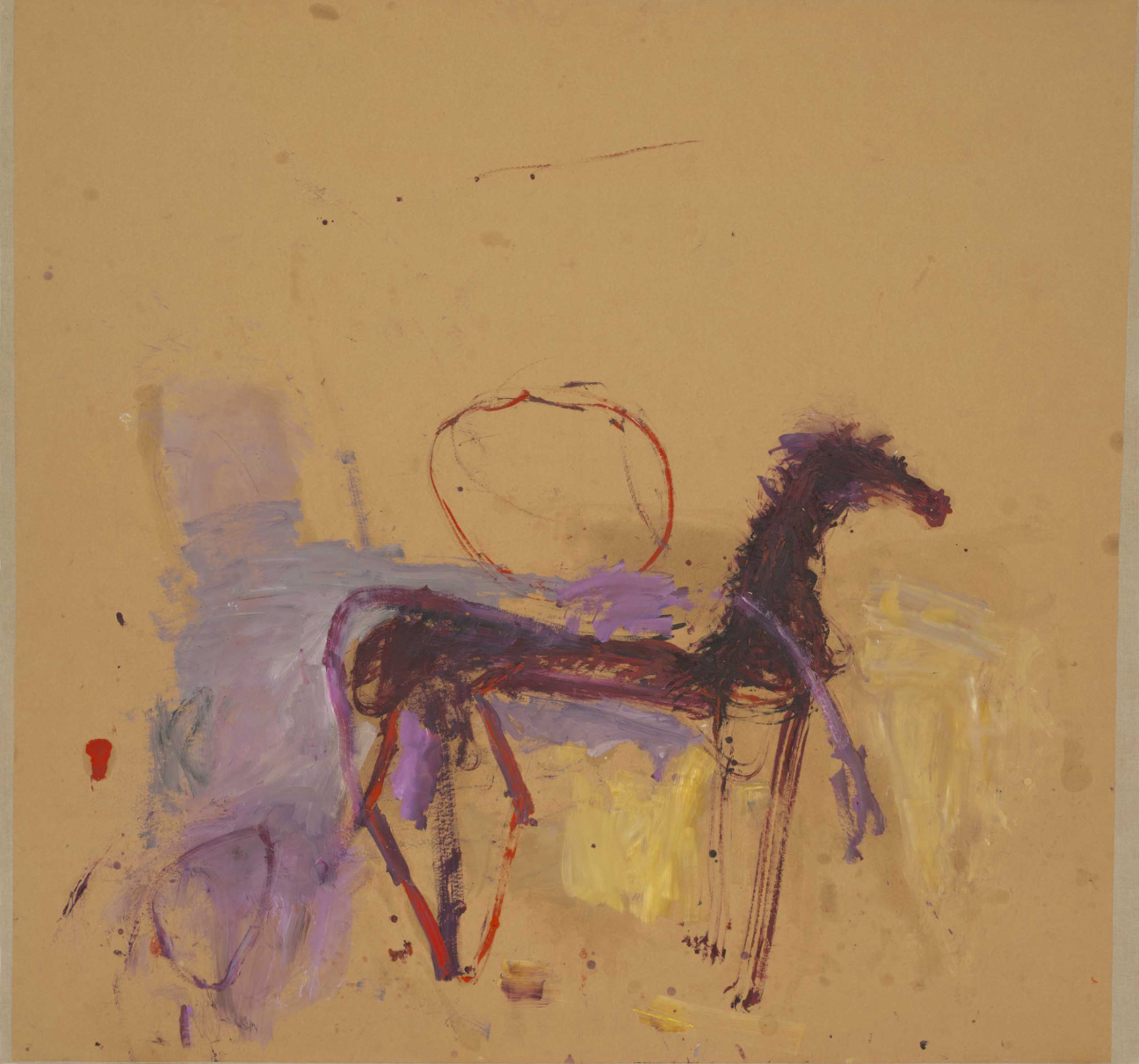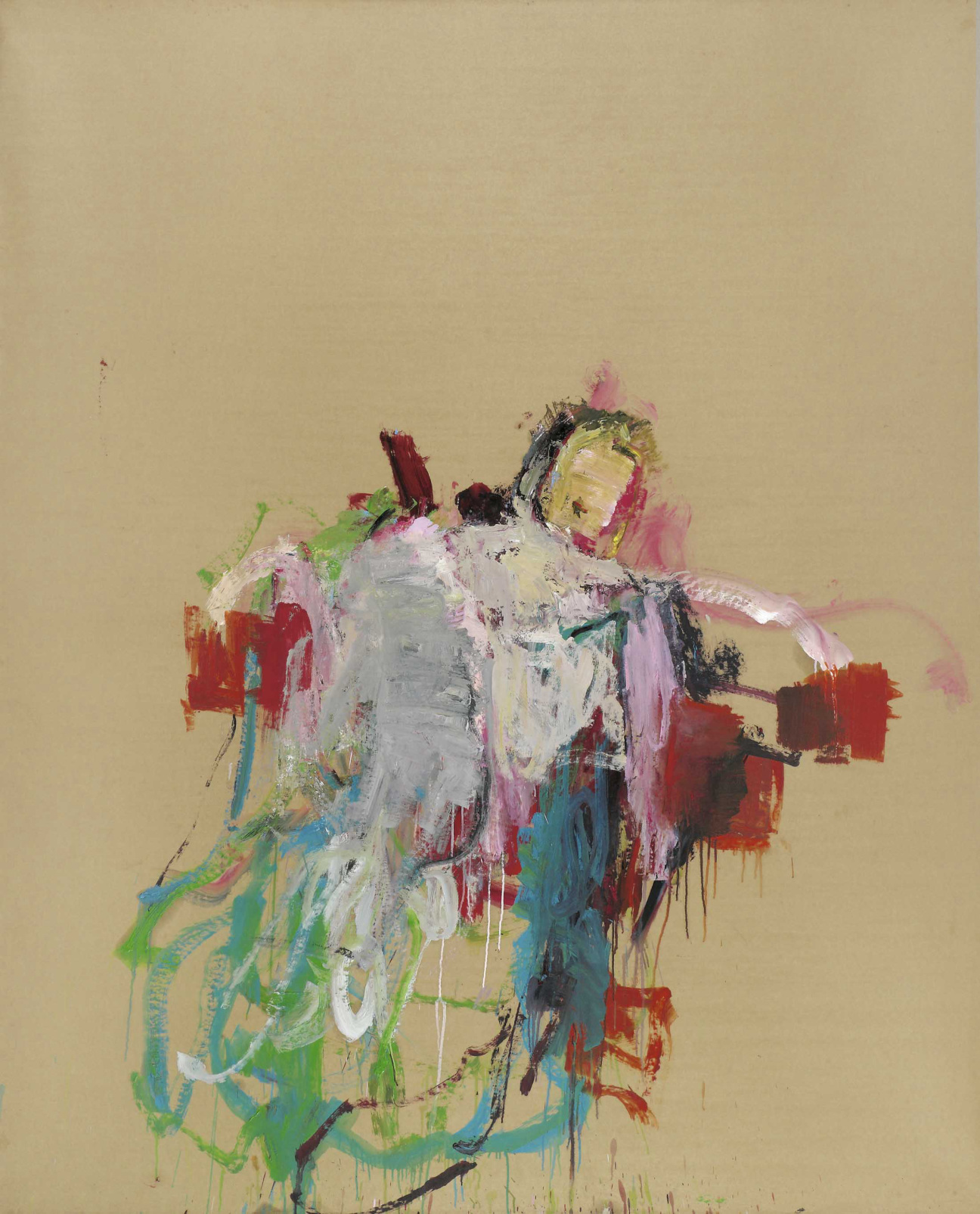
At 84, Austrian artist Martha Jungwirth has faced down blank canvases—or one of the many nontraditional surfaces she makes her incisive, unpasteurized marks on—for over six decades.
Two expansive European shows, on view through September at the Guggenheim Museum Bilbao and Venice’s Fondazione Giorgio Cini, prove that the painter has more marks to leave—and a constellation of concerns, both formal and contextual, to fuel them. Here, Jungwirth gives CULTURED a look inside the ideas and inspirations that have rhythmed her practice over the last few years.
CULTURED: At the end of your 1988 poem “the ape in me,” you wrote, “ego-shift: is what I call the moment at the end of / primitive thinking at the age of seven when teachers / start drilling rules and drive out the fairy-tale age.” Do you feel that your artistic career has afforded you a way to escape those rules and stay in the “fairy-tale age”?
Martha Jungwirth: You don’t quite manage to stay in that fairy-tale age, but as an artist you naturally have other roots that link you to your childhood—creativity and imagination. Other people may have to discard or neglect these roots because their lives are focused on the practical. As an artist, you can escape societal rules by setting your own.

CULTURED: Your Guggenheim Bilbao retrospective includes work up until 2023. What has your studio practice looked like in recent years, and what were you surrounding yourself with in the making of those newer works?
Jungwirth: I surrounded myself with good art and traveled to see exhibitions. I’m constantly looking at “old” art. In recent years, great painters like Goya or Manet have become much more interesting in terms of our era. Goya is one of the most important artists of all, especially in our current state of affairs, because he painted entire series on war and the catastrophes associated with it. And I find Manet interesting as a painter. His 1880 painting L’Asperge is one that you will never forget for the rest of your life. Manet also painted the shooting of Maximilian in Mexico, drawing on the shootings in Goya’s paintings. Especially in a rather bleak time, from pandemic to war, I have been thrown back to artists who leave a lasting impression.
CULTURED: Spontaneity is at the center of your work. I’m thinking of another line in “the ape in me”: “Leave visible the painting / process, no retouching, risk not recipe. Non finito.” How do you create the circumstances to remain spontaneous as an artist, and to continue to surprise yourself?
Jungwirth: By painting and seeing what kind of “blotch” I can create. I constantly surprise myself when I’m working, but of course you have certain ideas about quality. In the course of painting you have to return to those ideas.

CULTURED: Travel, nature, and literature have been lifelong inspirations for you. What recent adventures have marked you?
Jungwirth: Above all, I saw a lot of exhibitions. The German title of the exhibition “Herz der Finsternis,” at Palazzo Cini in Venice, references Joseph Conrad’s famous novel Heart of Darkness, which I read as a young woman. It tells the fictionalized story of a Belgian steamboat expedition up the Congo River, exploring the brutality of European colonialism in Africa at the time. An important impetus for my new works in Venice came from reading the book Africa, in Chains [Afrika, in Ketten, a compilation of work published in German] about colonial history by the French writer and journalist Albert Londres. His descriptions gave me the idea to visit the Musée de l’Histoire de l’Immigration at the Palais de la Porte Dorée, a building that was constructed for the last Paris Colonial Exhibition in 1931. It was against this thematic background of colonialism, exploitation, and migration then and now that the series of pictures entitled “Porte Dorée,” now on view in Venice, was created.
CULTURED: What are you excited to do next?
Jungwirth: To keep painting!
“Herz der Finsternis” by Martha Jungwirth is on view at the Fondazione Giorgio Cini in Venice through September 29, 2024. “Martha Jungwirth” is on view at the Guggenheim Museum Bilbao through September 22, 2024.










 in your life?
in your life?

